The Secret History of Hyderabad State of the Nizam (South India; 1724 – 1948)
Last Updated on July 15, 2021 by Hamad Subani
Illuminati Conspiracies and Intrigues against the Hyderabad State
The Unseating of Salabat Jang and the fall of de Bussy

The then Illuminati policy with regards to the Hyderabad State was to unseat Salabat Jang at all costs and to recall de Bussy from the Deccan. This was accomplished by creating a rift between Salabat jung and de Bussy through court intrigues. Later, the French government would officially intervene to recall de Bussy and undo all that he had accomplished. As mentioned earlier, The Deccan lacked the agricultural powerhouses of North India. And so, Salabat Jung could not raise large armies like the Mughals. But de Bussy had demonstrated that a French trained contingent with superior artillery could alleviate this disadvantage, and even put the larger armies of the Marathas on the run. In addition, an upstart of Arab origin named Hyder Ali had risen in the neighboring South Indian State of Mysore. Hyder Ali, and his son Tipu Sultan hated the British with a passion and had made a personal cause of extirpating them from South India. Salabat Jang was open to an alliance with Hyder Ali. And like Salabat Jung, Hyder Ali and his successor Tipu Sultan had considerably modernized their army using European technologies. It was therefore necessary to unseat Salabat Jung before he entered into an alliance with Hyder Ali and Tipu Sultan.
One of the main people involved in stirring intrigues against de Bussy was the diwan of Salabat Jung, Syed Lashkar.[1]J.D.B. Gribble, History of the Deccan (New Delhi: Rupa & Co. 2009) 37. More investigation is required about his origins. The name Lashkar was also used by earlier Sayyid Brothers. De Bussy needed resources for maintaining his well disciplined force of Europeans and European-trained sepoys, and was granted possession of the Northern Circars, a part of the coastline of the Hyderabad State. The intriguers started spreading rumors that his troops were too big a drain on the economy, even though they gave the advantage of having a big army. The successor of Syed Lashkar, Shahnawaz Khan adopted a more covert approach, subtly misleading de Bussy by gaining his trust and friendship. Slowly, all actual supporters of de Bussy started being removed from court positions to isolate him.[2]J.D.B. Gribble, History of the Deccan (New Delhi: Rupa & Co. 2009) 39. The French government officially intervened and replaced the mentor of de Bussy, the gifted Dupleix with M. Godehen in 1753.[3]J.D.B. Gribble, History of the Deccan (New Delhi: Rupa & Co. 2009) 39. Dupleix was sent back to France in disgrace and died in penury. The Chitpavani Peshwas killed Chanda Saheb, who was the candidate of Dupleix and Salabat Jung for the throne of the Nawab of Carnatic, leaving the position open for the British backed Muhammad Ali (The French of course, refused to intervene). Shahnawaz Khan managed to have de Bussy officially dismissed while he was far away from his stronghold in the Northern Circars. Shahnawaz Khan then wrote to the British for support and requested the Marathas to assassinate de Bussy.[4]J.D.B. Gribble, History of the Deccan (New Delhi: Rupa & Co. 2009) 46. As if by design, the Marathas would subsequently try to woo de Bussy to their side, but he declined out of his loyalty to Salabat Jang.[5]J.D.B. Gribble, History of the Deccan (New Delhi: Rupa & Co. 2009) 47. De Bussy would reach the outskirts of Hyderabad in 1756, only to find that Shahnawaz Khan had an army waiting for him. De Bussy garrisoned himself in an abandoned palace, and with reinforcements from the Northern Circars, was able to force Shahnawaz Khan into an amicable settlement.[6]J.D.B. Gribble, History of the Deccan (New Delhi: Rupa & Co. 2009) 47-48.
When de Bussy left to govern the Northern Circars again, Shahnawaz Khan had the brother of Salabat Jang, Nizam Ali (alias Fateh Jung) placed on the throne, and his other brother Basalath Jung was given an important position. This was done with the support of the Chitpavani Peshwa Balaji Baji Rao, whose own son Vishwasrao, showed up with a large army and took up position near Daulatabad.[7]J.D.B. Gribble, History of the Deccan (New Delhi: Rupa & Co. 2009) 50. Salabat Jung would have been killed were it not for de Bussy’s immediate intervention. De Bussy came rushing from the Northern Circars and even though Salabat Jung was surrounded by four armies in Aurangabad, de Bussy assigned his force to the personal protection of Salabat Jung.[8]J.D.B. Gribble, History of the Deccan (New Delhi: Rupa & Co. 2009) 50. While pretending to negotiate with Shahnawaz Khan, de Bussy captured the impregnable fortress of Daulatabad, where the previous diwan Syed Lashkar had retained his treasure.[9]J.D.B. Gribble, History of the Deccan (New Delhi: Rupa & Co. 2009) 51. He then had the camp of Shahnawaz Khan surrounded. When a confidante of de Bussy Hyder Jung was murdered after attending the durbar of Nizam Ali, de Bussy attacked the camp of Shahnawaz Khan, killing him and one of his sons.[10]J.D.B. Gribble, History of the Deccan (New Delhi: Rupa & Co. 2009) 52. Alarmed, Nizam Ali hastily fled the scene. De Bussy then had Salabat Jung escorted back to Hyderabd from Burhanpur. Apparently, Salabat Jang had given up all hope and had left to Burhanpur to visit the grave of his father Asif Jah I for the last time. But the intervention of de Bussy gave his reign a new lease of life.
Salabat Jang had given up all hope and had left to Burhanpur to visit the grave of his father Asif Jah I for the last time. But the intervention of de Bussy gave his reign a new lease of life.
It was now arranged to have the European powers indirectly remove de Bussy from the equation. Robert Clive who was occupied with affairs in Bengal suddenly gathered a force to retake Madras from the French. As a result, de Bussy was recalled, and had to proceed towards Madras with all his troops and sepoys. As soon as the de Bussy evacuated the Northern Circars, a British force from Calcutta invaded it and took the port of Machilipatnam. The remaining French forces in the Northern Circars begged Salabat Jang to come for assistance, which he did along with his brother Basalath Jung. With both of them out of the capital of Hyderabad, Nizam Ali was once again encouraged by the British to take up the throne. With de Bussy no longer there to help him, Nizam Ali deposed Salabat Jang and threw him into prison, where he was later killed on 16th September 1763. De Bussy returned and joined the other brother Basalath Jang, who had retired to his fort in Adoni (Carnatic). The French immediately intervened and recalled de Bussy back to Pondicherry,[11]J.D.B. Gribble, History of the Deccan (New Delhi: Rupa & Co. 2009) 60. leaving Basalath Jung with some French-trained sepoys. Nizam Ali quickly concluded peace with Basalath Jang, and would only annex his territory after his death. The British had thus displaced the French in Hyderabad State, which was subsequently transformed into a playground for Illuminati intrigues.
Nizam Ali’s Failure to Ally with Tipu Sultan results in joint British-Maratha Conspiracies against Hyderabad State

The Powers That be had decided that only the British were to rule India. And accordingly, in the Anglo-French wars in the Carnatic, the French were defeated in battles which had been rigged by their own military commanders. After the fall of Pondicherry, de Bussy and all other Frenchmen were captured and shipped back to Europe. On 14th January 1761, the Chitpavani Peshwa suffered a huge setback in the Third Battle of Panipat, which meant Maratha forces could no longer be summoned for Illuminati intrigues against Hyderabad State. Taking advantage of the situation, Nizam Ali started invading Maratha territory on his West, trying to recover territory lost in 1760 to the Marathas after the battle of Udgir. In 1763, he would sack Pune. In reponse, the Marathas tried to take Hyderabad but were defeated.[12]J.D.B. Gribble, History of the Deccan (New Delhi: Rupa & Co. 2009) 83. Lord Clive obtained a questionable decree from the Mughal Emperor who was in the captivity of the Nawab of Awadh at Allahabad and who had lost control of the Deccan a long time ago. This decree (dated 1766) awarded the entire Northern Circars to the British[13]J.D.B. Gribble, History of the Deccan (New Delhi: Rupa & Co. 2009) 62. and would later serve the purpose of land-locking Hyderabad State, which was a guarantee against any possible alliance or intervention of the French or the Ottomans. It is no coincidence that Clive’s actions also served the dual purpose of distracting Nizam Ali from fighting the Marathas. Nizam Ali responded by joining forces with Hyder Ali and launched an invasion of the British dominated Carnatic, but was defeated due to intriguers within the ranks of his military commanders. His forces were just 40 miles away from British Madras. While Hyder Ali retreated and continued his anti-British activities, Nizam Ali signed a humiliating treaty with the British which stipulated that he would support the future invasion of Mysore.
With the son of Hyder Ali, Tipu Sultan growing more ambitious and powerful than his father, the Powers That Be dreaded that Nizam Ali would enter into an alliance with him. Such an alliance now had the potential to turn the tables against the British. Because unlike his father, Tipu Sultan was making earnest preparations for war against the British. He had inducted a very large number of French mercenaries and had introduced latest European gunpowder technologies among his soldiers. Soon enough, Nizam Ali and Tipu Sultan were negotiating an alliance. Tipu Sultan was even insisting on a matrimonial alliance.[14]J.D.B. Gribble, History of the Deccan (New Delhi: Rupa & Co. 2009) 75. The British responded by “upgrading” their treaty with Nizam Ali with more perks for the latter. The new treaty gave Nizam Ali two British battalions, each of 800 European trained sepoys, commanded and officered by Europeans, and with six guns, to be at the ready disposal of Nizam Ali.[15]J.D.B. Gribble, History of the Deccan (New Delhi: Rupa & Co. 2009) 83. Nizam Ali’s talks with Tipu were disrupted by intriguers on his side, particularly his ambassador to Tipu, Hafizjee.[16]J.D.B. Gribble, History of the Deccan (New Delhi: Rupa & Co. 2009) 75. Soon enough, Lord Cornwallis, a major Illuminati figure who seems to have been called to the SubContinent specifically to deal with the threat of Tipu, declared war on Tipu. And the Marathas and Nizam Ali being in treaty with the British were to support the war. Tipu was defeated and had to cede a lot of territory, which was also shared with Nizam Ali and the Marathas.
The Peshwas and the British wanted to eventually destroy Hyderabad State. The only thing standing between their ambitions was Tipu Sultan.
Had Nizam Ali stood by Tipu Sultan, probably the history of the SubContinent would have taken a much better turn. The Chitpavani Peshwas and the British wanted to eventually destroy Hyderabad State. The only thing standing between their ambitions was Tipu Sultan. Sir John Kennaway, the first British resident of Hyderabad, renegotiated the alliance with Nizam Ali such that the British would only provide armed support to him if only if he was fighting Tipu Sultan and not the Marathas.[17]J.D.B. Gribble, History of the Deccan (New Delhi: Rupa & Co. 2009) 85. Despite the obvious ramifications of this treaty, Nizam Ali got duped into accepting British terms and isolating himself from Tipu Sultan. Little did he know that the British and the Chitpavani Peshwa had internal connections. And now, the Peshwa was eyeing the territory of Hyderabad State, emboldened by the fact the Tipu Sultan would not intervene because Nizam Ali refused to support him. The British were thus moving to the sidelines so that they would not be an obstacle to the Peshwa’s conquest of Hyderabad State. And Nizam Ali was too big of a dunce to realise that at the end of the day, the British and the Chitpavani Peshwas were linked and had a common cause.
The disbandment of Nizam Ali’s French Battalions

Nizam Ali still had a sizeable French contingent originally from Basalath Jung’s retinue. This contingent was led by Monsieur Raymond, who once served alongside de Bussy. The services of de Bussy had left a very positive impression of the French in Hyderabad State. And so, Moniseur Raymond was also highly regarded. Akthough there are some hints that unlike de Bussy, he was compromised by the Illuminati. Nizam Ali, being mistrustful of the British, contributed wholeheartedly to the development of the army of Moniseur Raymond, and had assigned entire districts in Bidar to produce revenue for their upkeep. In 1795, it consisted of 20 battalions with a total of 15,000 men and 124 Europeans.[18]J.D.B. Gribble, History of the Deccan (New Delhi: Rupa & Co. 2009) 87. To quote,
The corps was made self-sustaining in every respect and possessed storehouses, workshops, arsenals, gun foundries and powder mills. The ruins of the old gun foundry still form a conspicuous object on a piece of waste ground nearly opposite the Fateh Maidan near Chudderghat [Chaderghat].[19]J.D.B. Gribble, History of the Deccan (New Delhi: Rupa & Co. 2009) 87.

When the formidable Maratha chief Mahadji Scindia died in 1794, Nizam Ali decided to take back territory he had lost to the Marathas earlier. This time, he was taking along the forces of Monsieur Raymond. The Marathas had on their side European trained forces led by General de Boigne. In addition, the British residents of the both the Marathas and the Hyderabad State were accompanying their hosts in the battle. In other words, this was the perfect recipe to stage the battle to the disadvantage of the Nizam. We have seen earlier how the Nawabs of Awadh had accomplished this with the Mughals. The forces of Nizam Ali had almost won by holding a strong, unified line, but then the forces of Monsieur Raymond advanced into a trap where they were surrounded by the artillery of European trained Marathas. Raymond kept advancing deeper, but the Nizam sensing disaster, ordered a retreat to prevent further losses. Nizam Ali intended to lead his forces to victory next morning. But a plot was devised to corner him at night. The Marathas secretly surrounded the Nizam’s fortress of Kharda in advance. The Nizam and his main army were camped some distance away from it. At night, a small Maratha force showed up near the camp[20]J.D.B. Gribble, History of the Deccan (New Delhi: Rupa & Co. 2009) 91. and conspirators within Nizam Ali’s camp managed to convince him that an attack had begun and that he must flee to Kharda for his safety. Nizam Ali did so with his ladies. But once he thought he was safe inside, he realized that the Marathas had prepared well in advance to besiege it. The besieged Nizam Ali was forced to capitulate to the Marathas in the most humiliating terms. He did see through the deception the British had played by citing a clause in their treaty with him which disabled them from fighting the Marathas because they had a parallel treaty with them as well. But it seems Nizam Ali still continued to trust Raymond. And he soon began further upgrading and advancing his French battalions. On the other hand, he requested the British to disband their battalions and leave, because they refused to fight for him. This seriously perturbed the British as it would end British influence in Hyderabad State. And they soon modified the treaty, sweetening it by promising assistance against the Marathas in the future.

There were attempts to unseat the rather frail Nizam Ali in 1795 by having one of his sons conduct a coup (which failed thanks to his European trained forces). Then Raymond died in 1798 and his successor was a Fleming named Piron (Not to be confused with Maratha General Perron). It seems that unlike the mysterious Raymond, Piron was a commoner. The Powers That Be soon realized the danger of having a professional soldier lead these battalions rather than one of their own. They had no intention to cultivate another de Bussy. Secondly, Nizam Ali had grown frail. In the event of his death, the Powers That Be wanted to interfere in the succession struggle. But the French battalions had proven that they could limit the effects of coups and conspiracies. The same year, Lord Wellesley arrived to supervise the final campaign against Tipu. There were indications that Nizam Ali and Tipu Sultan had held secret talks, and after the disaster at Khurdla, Nizam Ali was considering an alliance with Tipu. If such an alliance materialized, the French regiments of Nizam Ali would welcome it, because Tipu Sultan also had numerous French contingents, who looked at the British with animosity. On a sidenote, Tipu Sultan was awed by the American Declaration of Independence (which he obtained a copy) and had even requested assistance from America. But they never replied.
And therefore a decision was made to eliminate all of Nizam Ali’s French battalions before the final British assault on Tipu Sultan. Nizam Ali’s prime minister, Azim ul-umara was in British hands, and along with the British resident, convinced the Nizam to disband his prized French battalions in exchange for the permanent (but paid) service of three more battalions of British troops (Nizam Ali only had two). Soon enough British forces arrived from Madras and surrounded the French battalions, who after surrendering peacefully, were shipped back to Europe. The nincompoop Nizam Ali seeing this show of force, tacitly agreed. If only he had stood his ground at this critical juncture and instead considered an alliance with Tipu Sultan, he would not have plunged Hyderabad State into further British entrapment.
The Fall of Tipu Sultan and the Isolation of the Nizam
Before the most powerful Maratha chief Mahadji Scindia had died in 1794, he had begun to remorsefully realise how his efforts against the Mughals and Hyderabad State were strengthening the British by leaps and bounds. He thus made peace with Tipu Sultan in 1792, and he used his influence to torpedo the completion of a treaty between the British, the Nizam, and the Peshwa, directed against Tipu. There are rumours that the Peshwa was seriously offended by his intervention, and that he had been poisoned. After his death, the Peshwa immediately ratified the treaty against Tipu. Nizam Ali had little incentive or obligation to participate. But did so out of fear of losing British support, which would make Hyderabad State vulnerable to the Marathas, who now had a very large number of European trained contingents.

The forces of Nizam Ali were commanded by his Prime Minister Mir Alam, and British forces from Madras and Bombay descended upon Seringapatnam. It is believed that Pandit Purnaiah, a Maratha brahmin who had befriended Tipu Sultan and had become his diwan was secretly assisting the British. He may have had connections with the Chitpavani Peshwas. And indeed, the British did coddle him after the fall of Tipu. Tipu Sultan had been betrayed from within by his Shiite minister Mir Sadiq. This man infiltrated Tipu’s circle by having his sister enter into a marriage with Tipu Sultan. When British forces arrived in the vicinity, he summoned Tipu’s army away from the battlefield claiming he was about to dispense their salaries. With no army guarding the fort, the British breached its walls and stormed it. Tipu was killed fighting sword in hand. He had killed so many of his attackers that his body was found buried underneath a large pile of their bodies. One of his loyal soldiers made his way to Mir Sadiq and also killed him. Mir Alam was giving a rousing welcome when he reached the outskirts of Hyderabad on his way back. Little did Nizam Ali know that he had participated in destroying the last obstacle to British hegemony in South India, and now the British would devote themselves to undermining Hyderabad State.

The removal of Tipu Sultan from the equation only made Nizam Ali more isolated and vulnerable to British economic conspiracies, which were aimed at destroying and depleting Hyderabad State, and this would manifest in later years, when Hyderabad State became indebted to European bankers, and governance declined to pre-Mughal levels. Nizam Ali was also cheated from obtaining his share of territory in the Mysore conquest. With the Peshwa arriving late to the campaign, the territory was only to be divided between Nizam Ali and the British. But the British connived to resurrect Mysore State as a puppet princely state, thereby cutting down the share of the Nizam. The remainder of the share of the Nizam was never allotted to him. Instead, he was given two more battalions, and in order to provide for the payment of these troops, he had to cede the newly acquired territories of Bellary, Anantapur, Cuddapah and Kurnool to the British.[21]J.D.B. Gribble, History of the Deccan (New Delhi: Rupa & Co. 2009) 120. This treaty was thrust upon the frail Nizam Ali in 1800, just three years before he died. He was worried about a war of succession in which the Marathas would intervene. Although not officially included in this treaty, the British also agreed to support Sikandar Jah in the upcoming war of succession.[22]J.D.B. Gribble, History of the Deccan (New Delhi: Rupa & Co. 2009) 123. This was a doubtful bargain, and the British benefited more from acquiring these districts. Soon enough, the revenue yielded from these districts would dwarf the amount required for the upkeep of the two battalions,[23]J.D.B. Gribble, History of the Deccan (New Delhi: Rupa & Co. 2009) 120. and the British happily pocketed the surplus. It was in Nizam Ali’s best interest to modernise his local Paigah troops, but the British saw them as potential competition. And Nizam Ali’s fears that it was necessary to support the British because of the Maratha threat proved to be unfounded as we shall see below. Thus, by putting his trust in the British instead of Allah, Nizam Ali would destroy the future of Hyderabad State for decades to come.
Chitpavanis lose control over the Maratha Confederacy

Up till now, the British would secretly act in concert with the Maratha Confederacy, and always avoided coming into conflict with them. This was because the Chitpavani Peshwa still managed to control the Maratha Confederacy after the disaster at Panipat. This was largely due to the efforts of the Chitpavani Nana Fadnavis, who had managed to escape the Third Battle of Panipat and became the Finance Minister of the Peshwa headquartered in Pune. Yashwant Rao Holkar, a major Maratha chief based in Indore already resented Peshwa Baji Rao II. When Nana Fadnavis died in 1800, Yashwant Rao Holkar marched down on Pune and battled with the Peshwa. Defeated, Peshwa Baji Rao II fled to Vasai/Bassein, a traditional stronghold of the Chitpavani people in the Konkan, which now consisted of a Portuguese fort under British control. He soon returned to Pune, but this time with a British force (after entering into a treaty with them).[24]J.D.B. Gribble, History of the Deccan (New Delhi: Rupa & Co. 2009) 133. But when he returned, Raghuji Bhonsale II (based in Nagpur) and Daulat Rao Scindia (successor of Mahadji Scindia; based in Ujjain) gathered their forces to retake Pune.

With the realization that the Maratha Confederacy would no longer reconcile to the leadership of the Chitpavani Peshwas, the British tacitly declared open season on the Maratha Confederacy. Simultaneously, the Nawab of Bhopal began annexing territories of Raghuji. And when Raghuji tried to reclaim them, the British intervened. Raghuji Bhonsale II and Daulat Rao Scindia were defeated and came to terms with the British. But Yashwant Rao Holkar decided to fight the British using traditional Maratha methods of guerrilla warfare. His traditional allies were the Pindaris, roving bands of armed robbers who followed Maratha military camps, and were grateful for being allowed to plunder. But Holkar ended up being betrayed by several of his allies, including the Pindaris, the Jats and the Sikhs. He signed a peace treaty with the British. Bound by treaty, Hyderabad State had to contribute its own native troops to this war. And in return, the Nizam’s province of Berar which was under Maratha domination, was returned to Hyderabad.
| ↑1 | J.D.B. Gribble, History of the Deccan (New Delhi: Rupa & Co. 2009) 37. |
|---|---|
| ↑2 | J.D.B. Gribble, History of the Deccan (New Delhi: Rupa & Co. 2009) 39. |
| ↑3 | J.D.B. Gribble, History of the Deccan (New Delhi: Rupa & Co. 2009) 39. |
| ↑4 | J.D.B. Gribble, History of the Deccan (New Delhi: Rupa & Co. 2009) 46. |
| ↑5 | J.D.B. Gribble, History of the Deccan (New Delhi: Rupa & Co. 2009) 47. |
| ↑6 | J.D.B. Gribble, History of the Deccan (New Delhi: Rupa & Co. 2009) 47-48. |
| ↑7 | J.D.B. Gribble, History of the Deccan (New Delhi: Rupa & Co. 2009) 50. |
| ↑8 | J.D.B. Gribble, History of the Deccan (New Delhi: Rupa & Co. 2009) 50. |
| ↑9 | J.D.B. Gribble, History of the Deccan (New Delhi: Rupa & Co. 2009) 51. |
| ↑10 | J.D.B. Gribble, History of the Deccan (New Delhi: Rupa & Co. 2009) 52. |
| ↑11 | J.D.B. Gribble, History of the Deccan (New Delhi: Rupa & Co. 2009) 60. |
| ↑12 | J.D.B. Gribble, History of the Deccan (New Delhi: Rupa & Co. 2009) 83. |
| ↑13 | J.D.B. Gribble, History of the Deccan (New Delhi: Rupa & Co. 2009) 62. |
| ↑14 | J.D.B. Gribble, History of the Deccan (New Delhi: Rupa & Co. 2009) 75. |
| ↑15 | J.D.B. Gribble, History of the Deccan (New Delhi: Rupa & Co. 2009) 83. |
| ↑16 | J.D.B. Gribble, History of the Deccan (New Delhi: Rupa & Co. 2009) 75. |
| ↑17 | J.D.B. Gribble, History of the Deccan (New Delhi: Rupa & Co. 2009) 85. |
| ↑18 | J.D.B. Gribble, History of the Deccan (New Delhi: Rupa & Co. 2009) 87. |
| ↑19 | J.D.B. Gribble, History of the Deccan (New Delhi: Rupa & Co. 2009) 87. |
| ↑20 | J.D.B. Gribble, History of the Deccan (New Delhi: Rupa & Co. 2009) 91. |
| ↑21 | J.D.B. Gribble, History of the Deccan (New Delhi: Rupa & Co. 2009) 120. |
| ↑22 | J.D.B. Gribble, History of the Deccan (New Delhi: Rupa & Co. 2009) 123. |
| ↑23 | J.D.B. Gribble, History of the Deccan (New Delhi: Rupa & Co. 2009) 120. |
| ↑24 | J.D.B. Gribble, History of the Deccan (New Delhi: Rupa & Co. 2009) 133. |


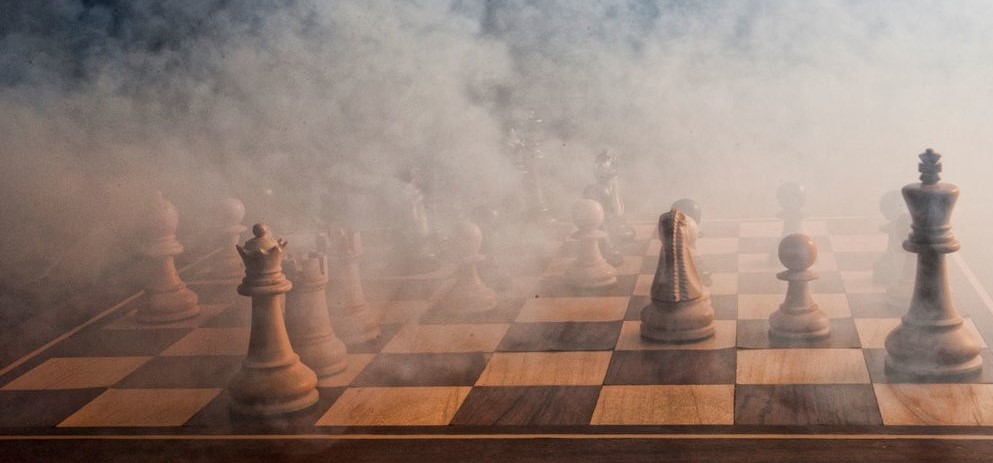


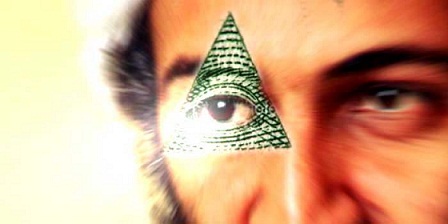
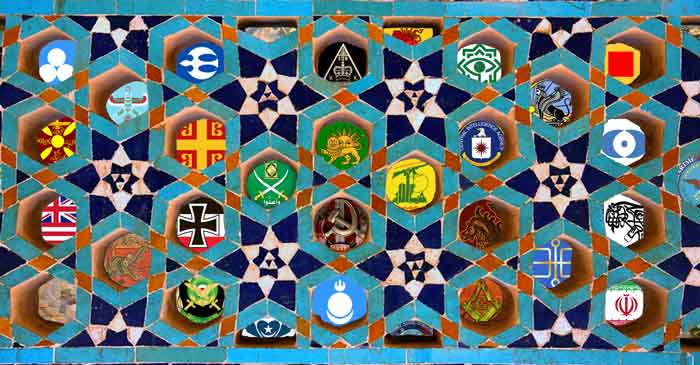
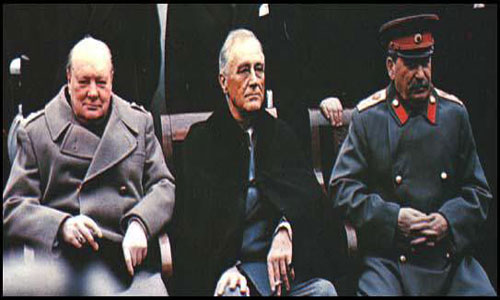

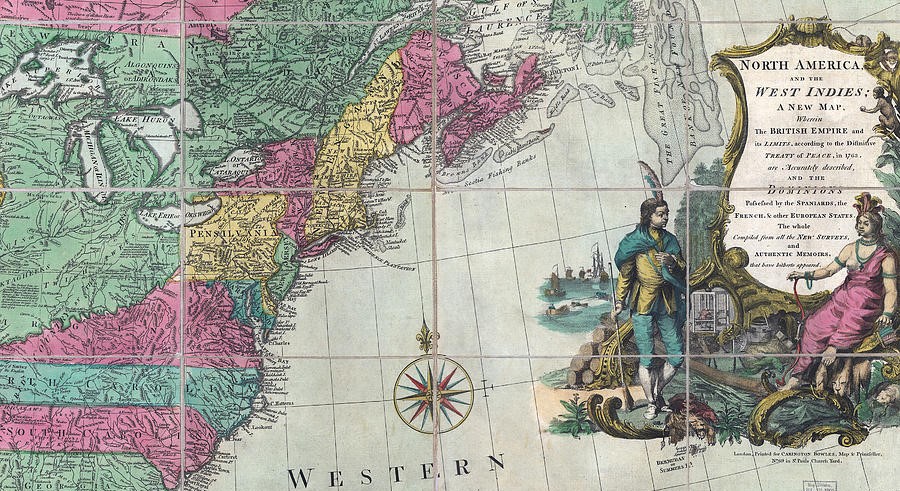
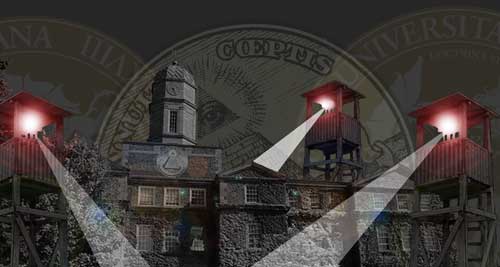
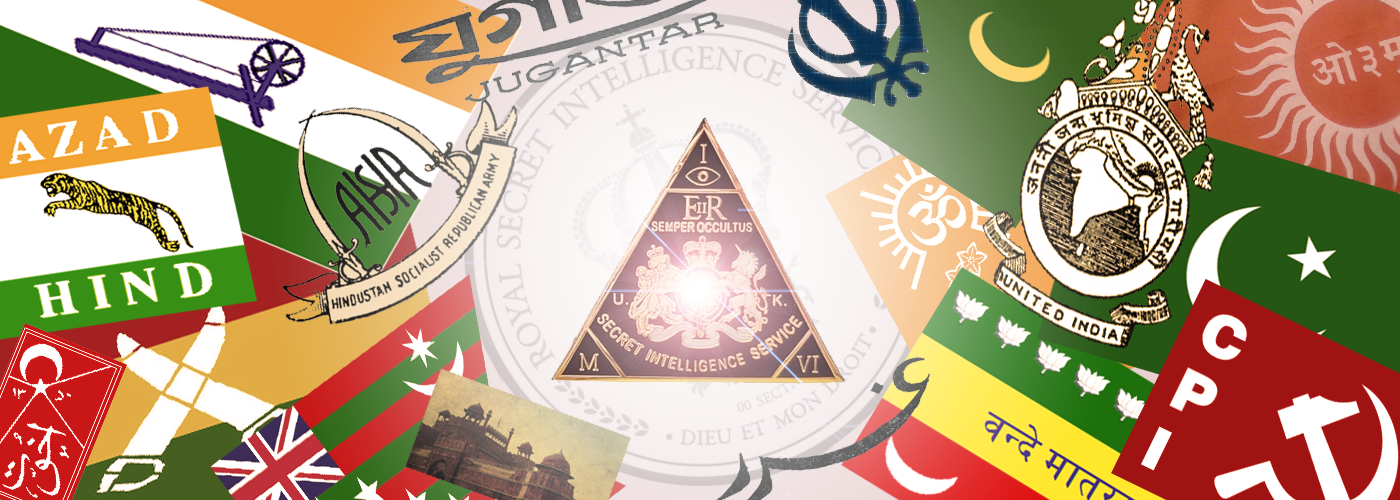
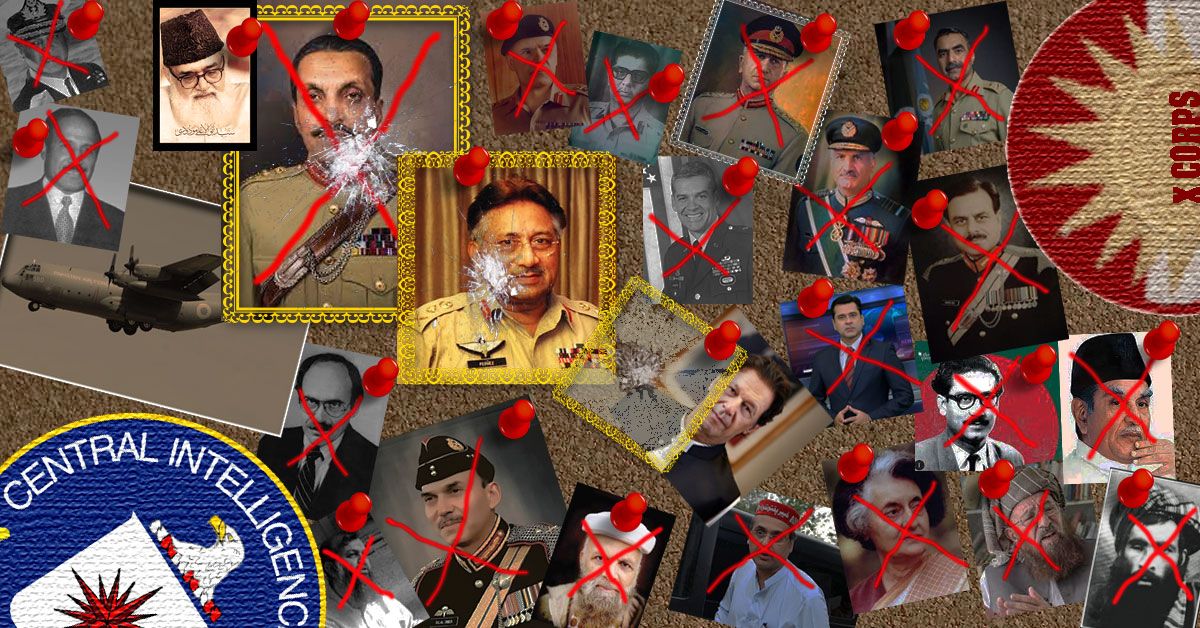
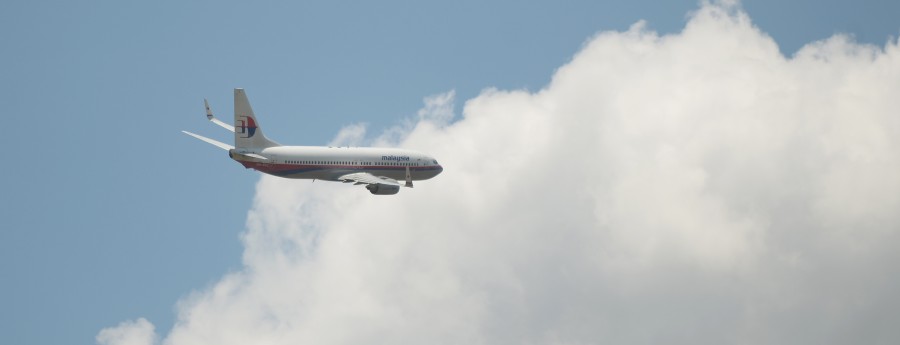
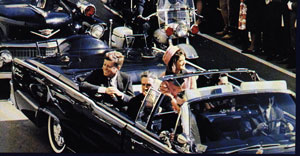

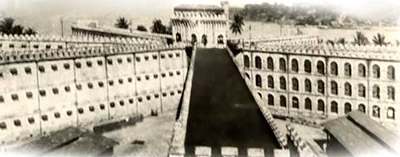

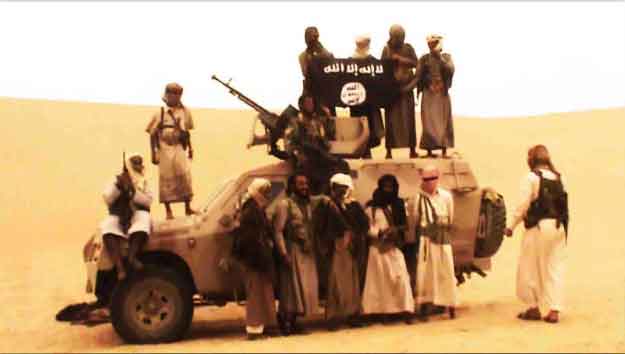
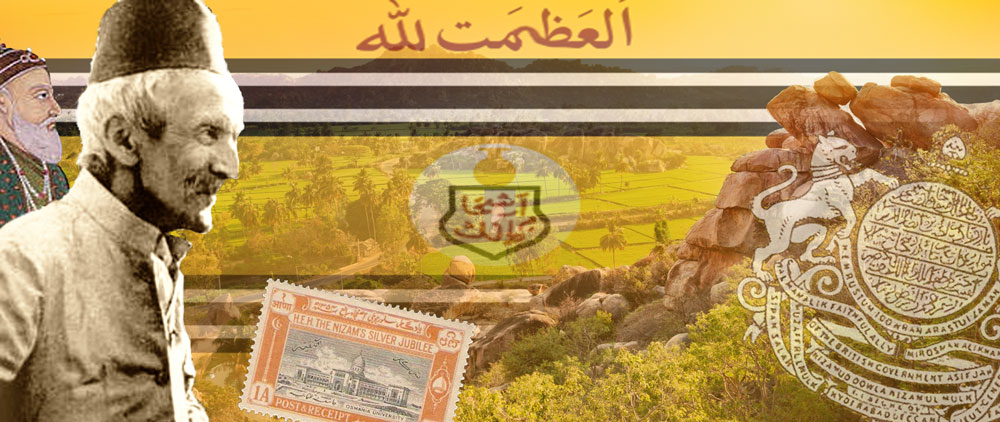






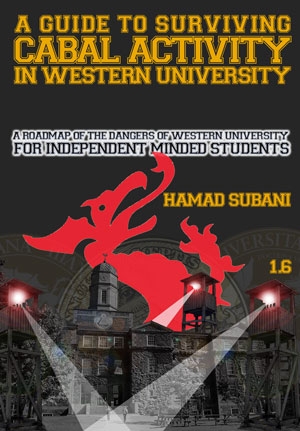
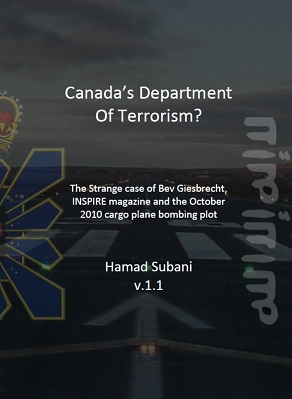
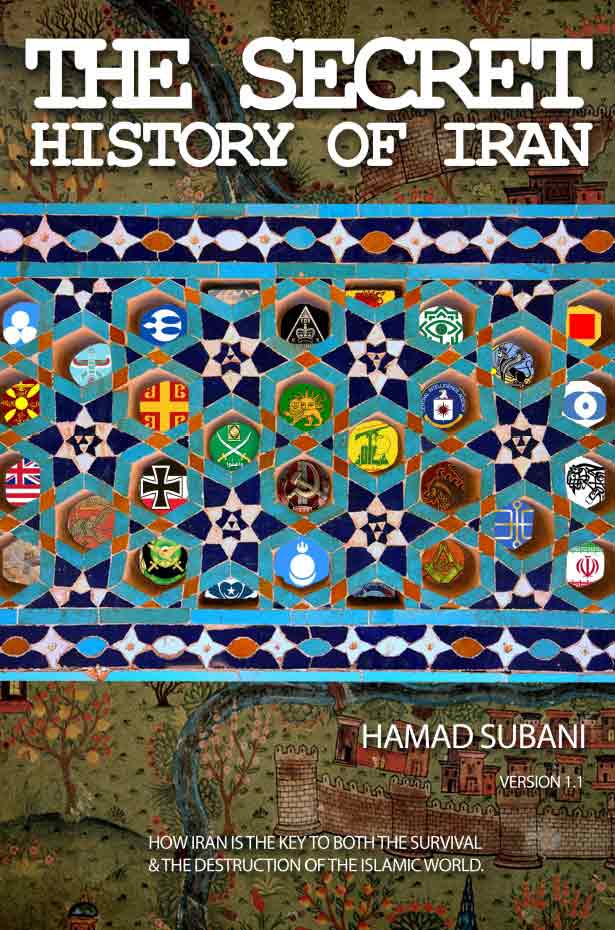
The First Freemason Lodge in India was not at the Gosha Mahal Baradari Hyderabad. It was a grand building built by teh Last Qutub Shahi ruler Tana Shah in 1682 and was donated to teh freemason by Nizam in 1872.
The first lodge was established for the British Military and other authorities in India in 1728 at Fort William Calcutta called Star of the East.
The doors of freemason were opened for Indians in 1775, when Nawab Umdatul Umra of Carnatic opened first lodge in Trichonopoly, in South India.
Please refer Freemasonry in India
https://linfordresearch.info/fordownload/World%20of%20Fmy/Nairn%20India.pdf
Shoukat Ali Khan Hyderabad India
Thanks for this.
The grave of Aurangzeb is in the premises of a Dargah in Khuldabad near aurangabad. there is no tomb over it nor even a structure.
Taj Mahal like structure is in aurangabad, whichis around ten miles away from his grave.
So what you have mentioned about his grave is not correct.
Thank you for the clarification. The Taj Mahal like structure is actually the tomb of his wife. I have corrected.
Gosh !!! what an intellectual article . Very first time I got to read something eloborative on Shah Waliulllah and the reason of his invitation to Abdali. You are incredibly remarkable in presenting the profoundness and minute details on the subject. Are you a historian or have you written any books.
Share your articles or suggest some books on historical India from Muslim rulers point of view. Had enough of Aurangazeb bashing and Muslim rule criticism nowadays around. So was wondering the justification from the other side.
Please do share.
You could take a look at my book The Secret History of Iran. Since the history of medieval Iran is linked to that of India, it does contain a lot of previously undisclosed information on the Mughals and other Indian dynasties as well.
Qasim Rizvi did not escape , he did his prison term and was relocated to Pakistan by the Indian government . I find lots of unsubstantiated facts in your write up.
This is not the official history of Hyderabad State, it is the Conspiracy History of Hyderabad State, where we try to fill in the blanks in the official narrative. Its not for everybody. Do you really think Qasim Rizvi would be let go so leniently?
Hi, certainly, history of Hyderabad is enticing. I have come across a novel “Theft of Nizam’s Gold” by a writer from Hyderabad, Naser Banaqeeb who presented the life of Nizam in a wonderful way. The novel is a gripping tale of bygone era of Nizam, love and mystery of the gold stolen – the history doesn’t have any record of it. Yes, the gold stolen from Nizam’s treasure has no mentioning in any books. But, the author described the same in an artistic manner. The novel is available online at amazon.
Dear Abraiz Ali Khan,
I am based in Mumbai and an avid reader of “authentic” historical books.
I would be much obliged if you could share with me any such books in your possession, including “Tragedy of Hyderabad”.
My contact details are: iyerpnpl@gmail.com
Warm regards,
Arvind Iyer
Hello Mr. Arvind. This is the book I have mentioned: https://www.goodreads.com/book/show/18360701-tragedy-of-hyderabad
I found it in a Sunday, second-hand book market. Currently, this book is with my brother who lives in Canada. Sorry for not being able to share it.
Dear Mr. Abraiz,
I have a nephew in Canada whom I will be meeting at a family function in October. If you can share with me the contact details of your brother in Canada, my nephew can coordinate with him and photocopy the book and hand it over to me when we meet.
Incidentally I am in Hyderabad on Monday June 25th. I would be very happy to meet with you.
Once again my email id is: iyerpnpl@gmail.com
Warm Regards,
Arvind Iyer
Pl visit Haziq and Mohi a book store near Charminar , they have copies . Picked up my copy of Tragedy of Hyderabad and other books on hyderabad from there . The store finds a mention in The Last Nizam by Jhon Zubrcki and is regularly frequented by history buffs , most notable being William Dalrymple , he has given a beautiful account in The White Mughals of William Kirkpatrick the British resident during the end of the 18th century and his affair with Khai un Nissa great niece of Aristu Jah the prime minister at Nizam Ali Khan’s court . He eventually ended up marrying her and converted to Islam . Most of his research work was carried out by literature provided by Haziq and Mohi .
Hello Mr Iyer , you can get the book and many other out of publication books on Hyderabad at Haziq and Mohi book store near Charminar . The store finds a mention in the Last Nizam by Jhon Zubrycki and is frequented by history buffs from India and abroad , most notable being William Darlymple whose book The White mughals revolves around the stories of William Kirkpatrick the british resident at the end of 18th century in Hyderbad and his affair with Khai un Nisa the great niece of Aristu Jah the prime minister of Nizam Ali Khan , which he later marries and converts to Islam .
You may also be interested in The Destruction of Hyderabad by Abdul Gafoor Abdul Majeed Noorani. No idea where to find it though.
Its overwhelming to read this..present day hyderabadis are so ignorant about their past. . I wish many of them could read this
Assalaamualaikum. I am a citizen of Hyderabad itself. Born and brought up here. I do have an interest in our history as well. You have written a very engaging piece of research. Do accept congratulations for it. As it happens, there are a few points that I do disagree with. One is your saying that venerating graves is an “Islamically abhorrent practice.” But maybe you subscribe to one of those sects that see graves as idols, so let it pass. I don’t need to tell you that scholars have compiled voluminous works on this subject. Read them if you will.
The other point that raises my hackles is the flippant description of Jamia Nizamia. As it happens, I am closely related to this institution. All my teachers of Islamic sciences have studied at this institution. Your description of it stems of ignorance or, if you will excuse me for saying so, your prejudice against those venerate graves. Jamia Nizamia was started in 1876 AD. Its founder, who was the teacher (Ataleeq as they called them then) of the 6th and 7th Nizams, passed away in 1917. If you would look into the history of Jamia Nizamia and its scholars, you would see many un-Islamic activities and trends being checked by them. Keep in mind that it was a nascent institution without any power of enforcement. Which means that Jamia Nizamia could only tell that something was wrong and must be stopped, but could not actually go out and stop them. Frankly, there are many firsts the credit of whom goes to Jamia Nizamia and more specifically its founder, Imam Anwarullah Farooqui (May Allah shower His Mercy on him). Hyderabad was the only state to have departments of Qazaath – where marriages, divorces, etc. were registered, the only state to outlaw reprehensible Hindu customs like Murli, etc., the only state to have standardized weights, possibly the only state or one of the very few which trained people with a standardized syllabus to administer basic Islamic laws to the populace. The State Central Library (earlier known as Asafjahi Library) was established at the behest of Shaykh Anwaarullah. No, they were nor politically active. As I said, it was a nascent institution, just started. Maybe in time, if Hyderabad state would have been there, they would have played a greater role.
The best part about your piece is that you give sources. I do have some of the books like Tragedy of Hyderabad with me. I will surely read up as much as I can the source books that you quote and see your point of view in much broader and richer detail.
Best of luck for your future research.
Assalaamualaikum.
Thank you for the additional info on Jamia Nizamia. While I do accept that Jamia Nizamia did in fact play a positive role, I believe that the fact that it was an official institution limited and hindered its ability to fulfill its role in a more wholesome manner. For example, they could not critic the sponsorship and inclusion of Shiite practices of later Nizams. And by and large, they did fail to enlighten the Muslim population, as evidenced by the level of ignorance and the incorporation of non-Islamic practices into Islam by the common people. If The Powers That Be were serious about Islam, they would have supported it more thoroughly, perhaps with a budget much bigger than the war aid they gave to Britain. As you mentioned, they started doing so, but it was too little, and too late.
In Islamic history, Muslim groups attain political power only when they start imposing and reinstating the natural order of things. Otherwise nature overcomes them. Towards the end, the Nizams began failing to maintain their holistic connection to the Mystery Saint.
Dude you are awesome. Where you been?
Do you have any recommendation for occult conspiracy sites with muslim perspective?
The main reason why it’s so hard to find this is the cultural lag muslim readers annnd writers have due to the ravages of colonialism westernization and the like. In the world that emerged after ww2 seems the only ticket for indians and muslims to prosper in the west was the sci/tech route. So as a fractured bordered nation, there was not much literal development.
For example most muslims i know go as far as saying 911 was ‘possibly’ a conspiracy and that Kanye or whoever is a free mason, and that’s as far as it goes. They will never include the saudis or big banks or the company they work for.
Anyway look forward to reading your next masterpiece.
The only “Islamic” Conspiracy website that I find worth a mention is that of David Livingstone> http://www.conspiracyschool.com/